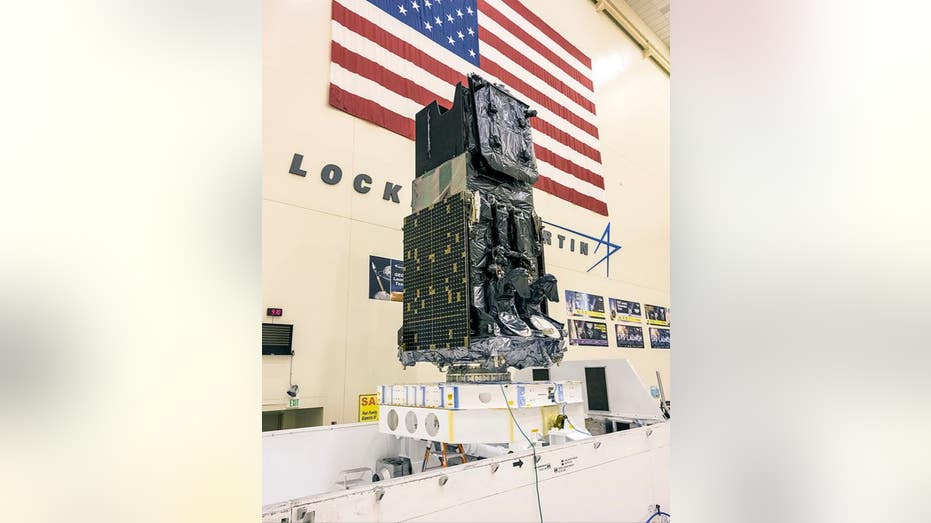ULA sucessfully launches first Atlas V rocket of 2021
The mission marks the 87th Atlas V launch to date
The United Launch Alliance has successfully launched its first Atlas V rocket of 2021. The Atlas V took off at approximately 1:37 p.m. from Space Launch Complex-41 at Cape Canaveral Space Force Station in Florida on Tuesday.

Photo courtesy of United Launch Alliance
The rocket, which stands at 194 feet tall, is carrying the Department of Defense's fifth Space Based Infrared System Geosynchronous Earth Orbit (SBIRS GEO) satellite for the U.S. Space Force's Space and Missile Systems Center.
Atlas V, which has a 100% mission success record, previously launched the first four SBIRS GEO satellites in the constellation between 2011 and 2018. The SBIRS GEO constellation orbits at approximately 22,000 miles above the equator.

Lockheed Martin’s SBIRS GEO-5 missile warning spacecraft is the first military space satellite built on a modernized LM 2100 Combat Bus™ space vehicle. (Photo courtesy of Lockheed Martin)
The satellites, built by Lockheed Martin, provide infrared surveillance that support early missile warning, detection and defense, battlespace awareness and technical intelligence. Built in about five years, SBIRS GEO-5 is the most advanced iteration to date, and is the first-ever military space satellite built on Lockheed's LM 2100 Combat Bus™ space vehicle.
"The need for SBIRS systems has never been more critical," Lockheed Martin's SBIRS program manager Tom McCormick said during a prelaunch mission briefing. "The threat of ballistic missile technology is spreading around the world."
SBIRS satellites have detected and tracked more than 1,000 missile launches around the world in 2020, according to McCormick.
"Thank you to our mission partners for the tremendous teamwork as we processed and launched this asset that provides powerful surveillance and critical capabilities to protect our warfighters," ULA vice president of Government and Commercial Programs Gary Wentz said in a statement following the launch. "We are proud to work with the U.S. Space Force to continue to meet the national security needs of our country."
NASA SUCCESSFULLY LAUNCHES ROCKET MEANT TO EXPLORE ENERGY TRANSPORT IN SPACE
Tuesday's mission marks ULA's 144th successful launch to date, the 87th Atlas V launch to date, the 72nd Atlas V launch from Cape Canaveral and the eighth Atlas V configured in the 421 variant. The 421 configuration utilizes a 4-meter diameter fairing, two solid rocket boosters and a single engine Centaur upper stage.

Photo courtesy of United Launch Alliance
The Atlas booster for this mission was powered by the RD AMROSS RD-180 engine. Aerojet Rocketdyne provided the RL10C-1-1 engine for the Centaur upper stage and the two AJ-60A solid rocket boosters.
The 421 has flown seven times before, including the deployments of the Wideband Global SATCOM-1 and -2 military communications satellites, the ICO G1 payload, the Magnetospheric Multiscale (MMS) mission for NASA, the Mexican Morelos-3 satellite on ULA's 100th launch, and NROL-61 and -52 for the national Reconnaissance Office.
CLICK HERE TO READ MORE ON FOX BUSINESS
The mission was previously scheduled for Monday but was scrubbed due to an "anomalous system response" during the Centaur's liquid oxygen chilldown operations that could not be resolved during Monday's 40-minute launch window.
ULA's CEO, Tory Bruno, said late Monday that the issue was a "faulty temperature" sensor in the liquid oxygen ground system.
"Bad sensor prevented us from confirming the chill," Bruno tweeted. "Was actually fine. Ran out of time before we sufficiently understood it."
ULA’s next launch is the Space Test Program (STP)-3 mission for the U.S. Space Force’s Space and Missile Systems Center, planned for June 23, 2021, from Cape Canaveral Space Force Station, Florida.





















